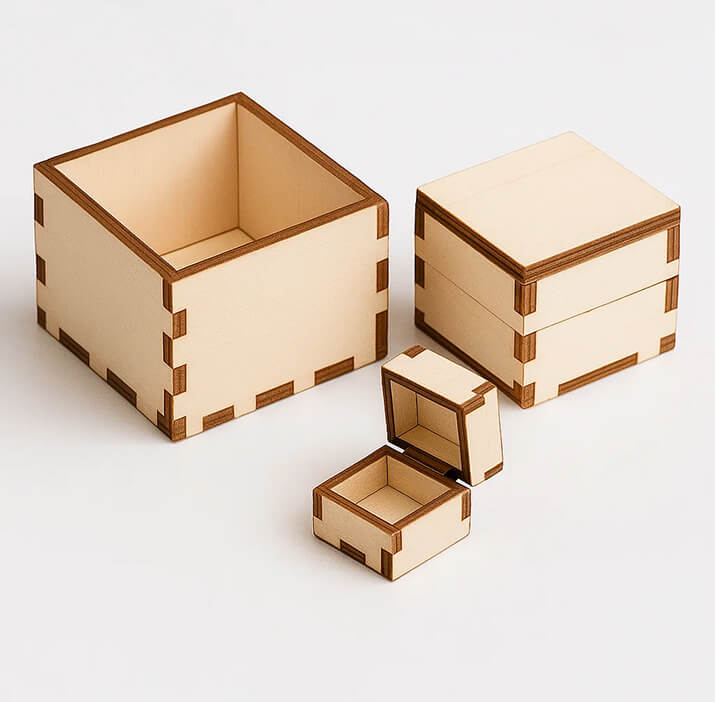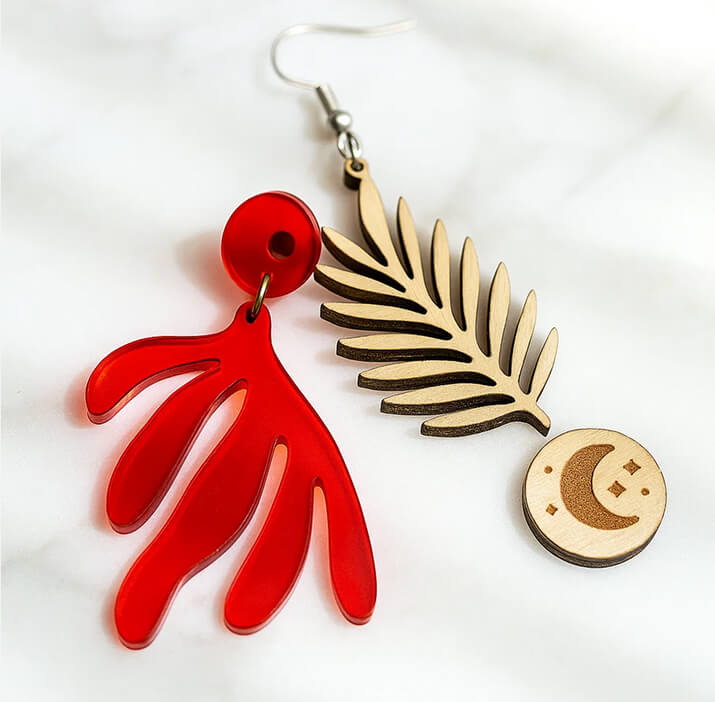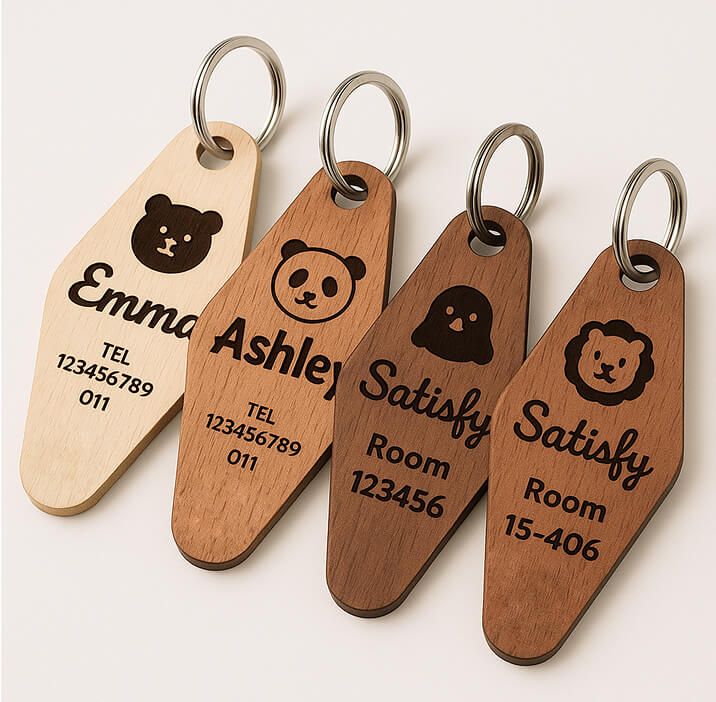![[Laser cut and engrave] Doll House Mailbox](https://image-res.xtool.com/resource/xtool/community/attachment/xtool-community/2bd24039-4bf4-4535-bdb1-bef1bcc407ac?x-oss-process=image/resize,w_1200,h_900,limit_0/interlace,1/format,webp/auto-orient,1)
Doll House Mailbox

Information
In a previous project we made a picket fence panel to go with a doll house. In this project we will create a small mailbox to compliment the fence and doll house.
Instruction
Step1: Create the box.
When creating boxes, you could glue the box together just where the panels meet up in what is called a butt joint. However, it is stronger to use finger joints, which increases the glue surface area. On a small project like this, the finger joint will also help with alignment.
A great resource for creating boxes of any size with your laser is boxes.py. This free resource allows you to enter any specifications and create a box in seconds.
Step2: Import and add a post
Boxes.py provides an SVG of our box. We simply need to drag and drop the file into the canvas and now we have the vector for the box.
tip: never resize the box cutout, because it will alter the thickness of the finger joints.
We now need to create a post to hold the mailbox. For this I'll just create a simple rectangle. The width will be pretty small to be proportional to the thickness of the material. I decided .187 inches would be a good width.
Step3: Add a base
Next, add in a shape for a base. I like to use the square with rounded corners for this purpose.
Step4: Dado for the Post
In order to assemble our mailbox, we need a place to attach the platform, post, and the mailbox. The best way to do this is to create a dado in the base and the bottom piece of the mailbox. This is simply a hole the same size as the post that will receive post on each end.
I made the post .187 inches by .125 inches, so naturally you would think to make the dado the same size in the platform and in the bottom of the box. Unfortunately, this is not exactly true. Because one shape we are looking at the inside dimensions of our shape (the dado) and in the other shape we are looking at the outside dimensions. Because of this we have to account for the kerf of the laser. on the D1 with a 5W laser, the kerf is .008 mm (.00314 inches). The kerf is the width of what the laser cuts as it makes a pass. Although it is very small, it still will make the dado too loose because we are doubling it, since there is a kerf at the bottom and one at the top of the shape. Likewise there is one to the left and to the right of the shape as well.
With all that being said, the think we want to do is to subtract .006 inches from the width of the post which is .187 inches to get .181 inches. In the same way, we need to subtract .006 inches from the thickness of the post which is .125 inches and get .119. This will result in a dado that has a snug fit to the post.
Step5: Add a Dado to the mailbox
The last step is to add the dado to the bottom piece of the mailbox. To do this simply copy and paste the dado we made in the base.
Step6: settings
For this project all processes are cut, but you could add an engrave process to put your mailbox number if you want.
Step7: Cut out
Next, let's set up the laser with basswood plywood and run the machine. Since this is such a small project, I easily found a scrap piece of plywood that would work. Just remember to use the trace feature to make sure the object will fit on the scrap board.
Be sure to follow all the safety rules that go with your laser. Always wear the necessary personal protective equipment when the laser is in operation.
Step8: Assemble
Finally, we need to assemble the box. This is simply just snapping the parts together. I used wood glue on the top and bottom of the post, but only dry fit the box together.





